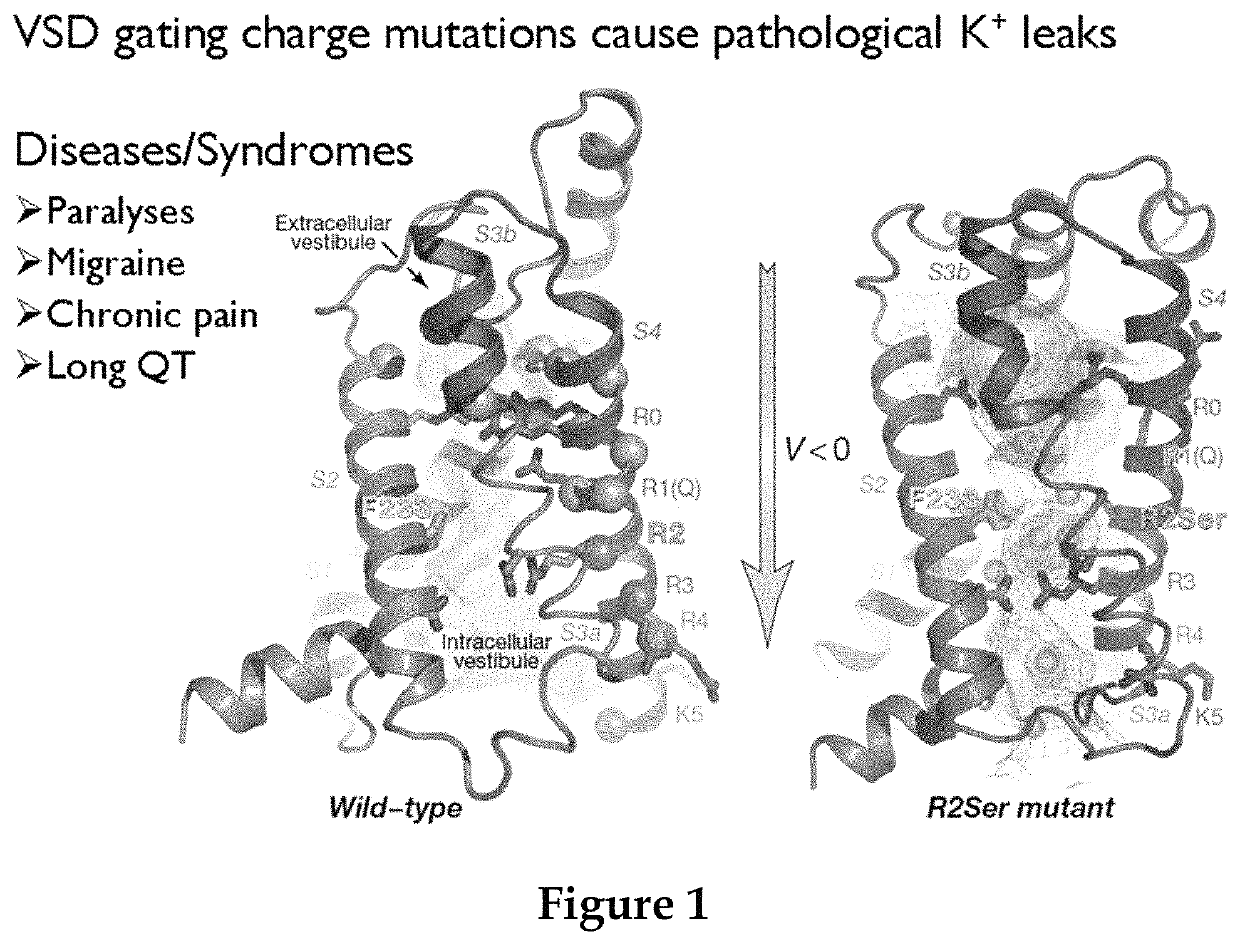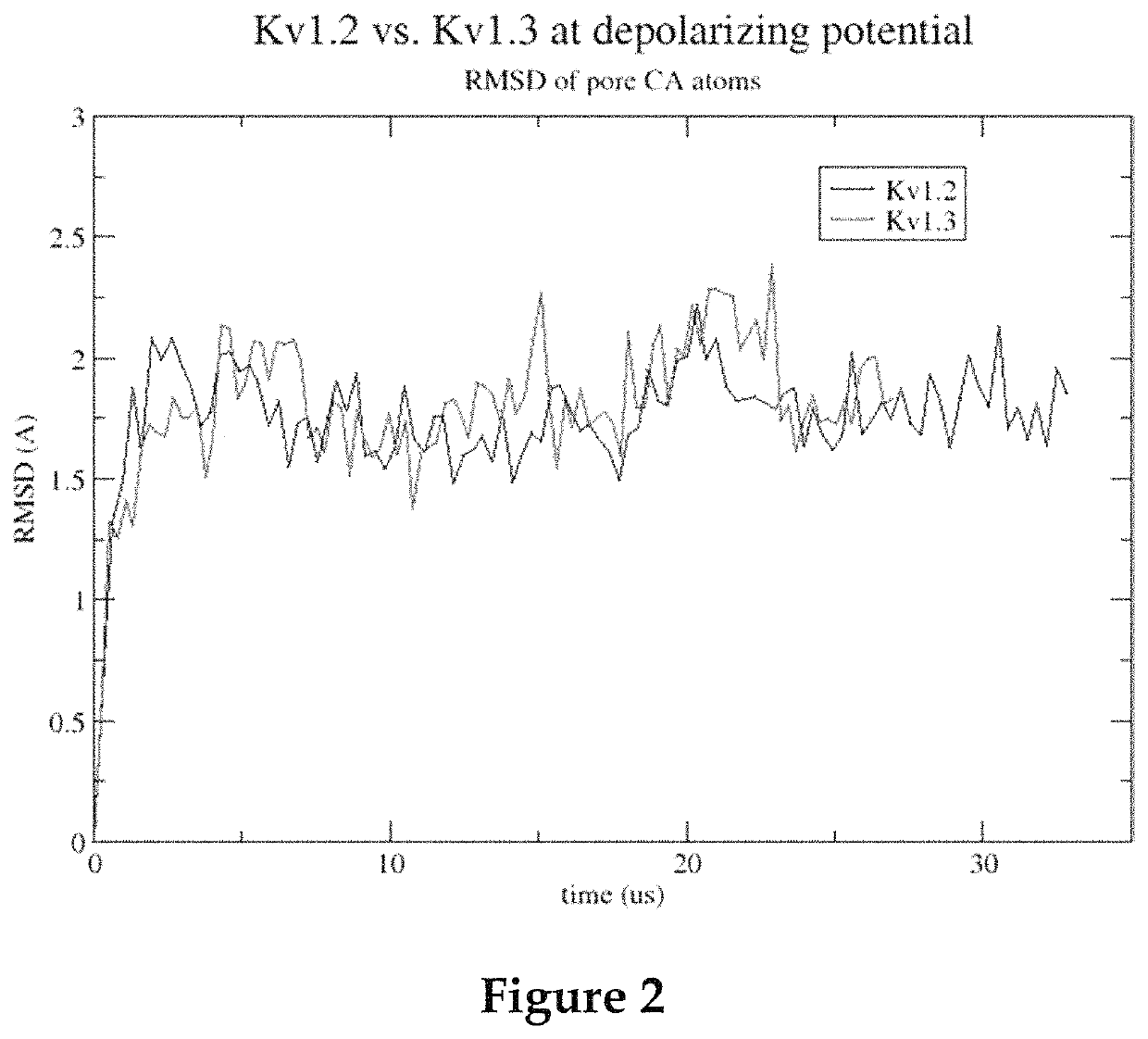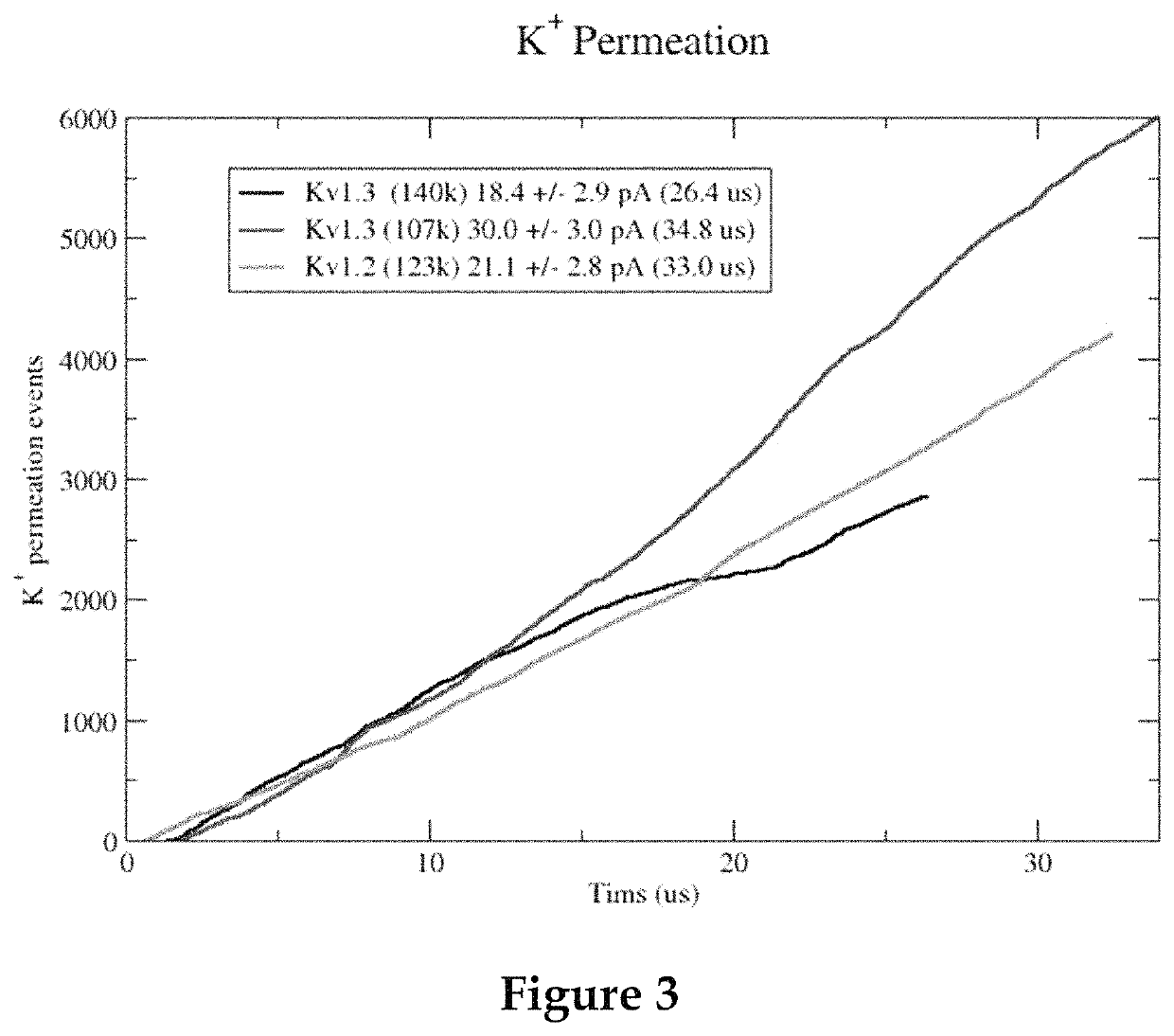Methods for screening voltage-gated proteins
a voltage-gated protein and protein technology, applied in the field of methods for screening voltage-gated proteins, can solve the problems of difficult identification of molecules that modulate the activity of voltage-gated proteins (hereafter, “vgps”) and relatively non-specific problems
- Summary
- Abstract
- Description
- Claims
- Application Information
AI Technical Summary
Benefits of technology
Problems solved by technology
Method used
Image
Examples
example 1
Subcloning of cDNA Constructs
[0664]cDNA plasmids encoding VGICs will be subcloned into appropriate vectors suitable for the generation of stable cell pools and stable cell lines. In certain embodiments, the pIRESpuro3 vector will be used for high, uniform expression in antibiotic resistant, stable pools to support electrophysiological characterization of Kv2.1 wild-type and mutant channels. The mutant VGICs used will include “wild-type” Kv2.1, Kv2.1 R300S mutant, and Kv2.1 R294C / R300S double mutant. All Kv2.1 constructs contain a set of mutations (T355S, K356G, A362D, S363A, I379M, Y380T, and K382V) in the channel's “turret region” that enables blockade of the central pore current by turret-selective (and pore-blocking) toxins, e.g., agitoxins.
example 2
Generation of Wild-Type and Mutant Kv2.1 Stable Cell Pools, and Initial Evaluation of Central Pore Currents
[0665]Antibiotic-resistant stable cell pools from each Kv2.1 cDNA will be generated. Electrophysiological characterization of expression of each cell pool (the channel's central pore current) will be performed on IonWorks. The central pore current of each pool will be measured and characterized to determine I / V, G / V, and selectivity.
[0666]In certain embodiments, multiple transfections will be employed to obtain sufficiently high expression levels. Validation of cDNA plasmid preparations can be performed by other methods, including, but not limited to, qPCR or oocyte expression studies.
[0667]A host parental cell line (CHO) will be evaluated for sensitivity to antibiotic selection and toxicity of cDNA constructs to determine optimal conditions for transfections. CHO cells will be transfected with multiple concentrations of cDNA encoding the VGICs described herein. Antibiotic-resi...
example 3
Manual Electrophysiology and Pharmacological Evaluation of Central Pore and Gating Pore Currents
[0669]Stable pools from each Kv2.1 cDNA will be used to evaluate the biophysical and pharmacological properties of wild-type and mutant Kv2.1 central pore and gating pore (leak) currents.
[0670]Manual voltage-clamp electrophysiology will be used to measure I / V and G / V relationships and selectivity for central pore current. Gating pore current pharmacology will be determined as a function of the relationship between I / V and G / V as well as the selectivity in the presence of central pore and gating modifying peptides.
[0671]These results will demonstrate Kv2.1 central pore I / V and G / V relationships and ion selectivity as well as Kv2.1 gating pore I / V and G / V relationships and gating pore ion selectivity. These results will also be used to determine whether there is a response, cessation of, or reduction in leak current in R294C, R300S and R300S Kv2.1 mutants exposed to cysteine-reactive reagen...
PUM
| Property | Measurement | Unit |
|---|---|---|
| voltage | aaaaa | aaaaa |
| voltage | aaaaa | aaaaa |
| electrostatic potentials | aaaaa | aaaaa |
Abstract
Description
Claims
Application Information
 Login to View More
Login to View More - R&D
- Intellectual Property
- Life Sciences
- Materials
- Tech Scout
- Unparalleled Data Quality
- Higher Quality Content
- 60% Fewer Hallucinations
Browse by: Latest US Patents, China's latest patents, Technical Efficacy Thesaurus, Application Domain, Technology Topic, Popular Technical Reports.
© 2025 PatSnap. All rights reserved.Legal|Privacy policy|Modern Slavery Act Transparency Statement|Sitemap|About US| Contact US: help@patsnap.com



